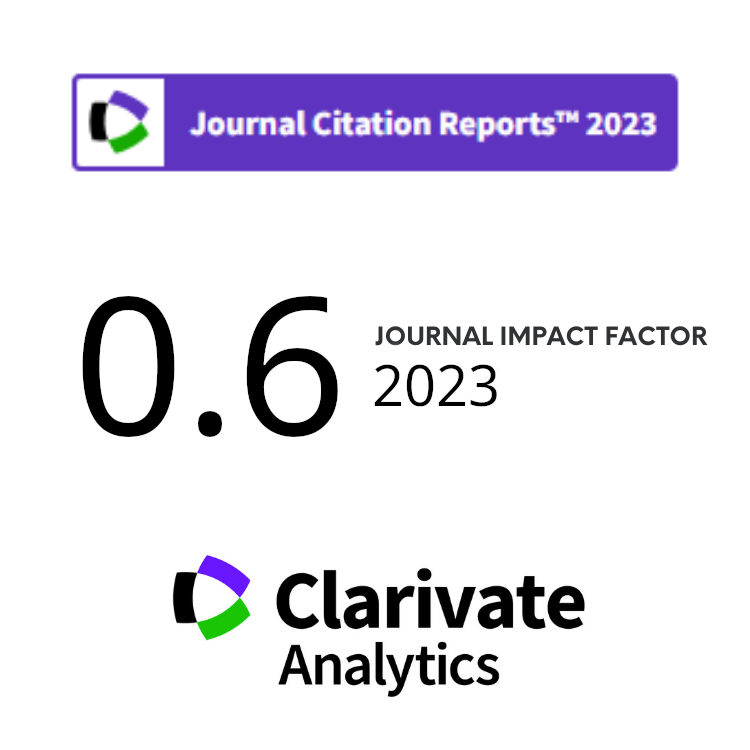Atmospheric Nitrogen Plasma-Induced for Embedding NH2@Cubic-Bicontinuous Mesoporous Silica as Uranium (VI) Adsorbent Candidate in Seawater
Abstract
Keywords
Full Text:
PDFReferences
T. P. Gandhi, P. V. Sampath and S. M. Maliyekkal, Sci. Total Environ. 825 (2022) 153947.
V. Ratnitsai, W. Wongjaikham, D. Wongsawaeng et al., J. Nucl. Sci. Technol. 59 (2022) 629.
W. Wongjaikham, D. Wongsawaeng and P. Hosemann, J. Nucl. Sci. Technol. 56 (2019) 541.
A. Saputra, D. Swantomo, T. Ariyanto et al., Water Air Soil Pollut. 230 (2019) 213.
S. Porrang, N. Rahemi, S. Davaran et al., J. Taiwan Inst. Chem. Eng. 123 (2021) 47.
F. Kleitz, S. H. Choi and R. Ryoo, Chem. Commun. 17 (2003) 2136.
Y. Guo, M. Xia, K. Shao et al., Phys. Chem. Chem. Phys. 24 (2022) 17163.
M. Chaudhary, L. Singh, P. Rekha et al., Chem. Eng. J. 378 (2019) 122236.
A. Najah, D. Boivin, C. Noël et al., Mater. Chem. Phys. 290 (2022) 126629.
A. A. Hussain, S. Nazir, R. Irshad et al., Mater. Res. Bull. 133 (2021) 111059.
S. M. Hafezian, P. Biparva, A. Bekhradnia et al., Adv. Powder Technol. 32 (2021) 779.
M. Barczak, New J. Chem. 42 (2018) 4182.
F. F. Chen, Introduction to plasma physics, Springer Science & Business Media, New York (2012) 4.
G. Kongprawes, D. Wongsawaeng, P. Hosemann et al., Int. J. Energy Res. 45 (2021) 4519.
K. Puprasit, D. Wongsawaeng, K. Ngaosuwan et al., Innovative Food Sci. Emerg. Technol. 66 (2020) 102511.
Y. Todorova, E. Benova, P. Marinova et al., Processes 10 (2022) 554.
Z. Ye, L. Zhao, A. Nikiforov et al., Adv. Colloid Interface Sci. 308 (2022) 102755.
J. He, X. Wen, L. Wu et al., TrAC, Trends Anal. Chem. 156 (2022) 116715.
H. Zeghioud, P. Nguyen-Tri, L. Khezami et al., J. Water Process Eng. 38 (2020) 101664.
D. Ghernaout and N. Elboughdiri, Open Access Lib. J. 7 (2020) 1.
X. Ren, D. Shao, G. Zhao et al., Plasma Processes Polym. 8 (2011) 589.
L. Wu, Y. Cai, S. Wang et al., Int. J. Hydrogen Energy 46 (2021) 2432.
Y. Sun, S. Lu, X. Wang et al., Environ. Sci. Technol. 51 (2017) 12274.
N. S. Pamungkas, D. Wongsawaeng, D. Swantomo et al., Eng. J. 27 (2023) 45.
S. I. Hosseini, S. Mohsenimehr, J. Hadian et al., Phys. Plasma. 25 (2018) 013525.
S. Banafti, M. Jahanshahi, M. Peyravi et al., Microporous Mesoporous Mater. 299 (2020) 110107.
M. E. Adrover, M. Pedernera, M. Bonne et al., Saudi Pharm. J. 28 (2020) 15.
S. Manimaran, K. Subramanian, R. Tschentscher et al., J. Porous Mater. 29 (2022) 357.
K. Li, G. Liu, C. Wang et al., Catal. Commun. 144 (2020) 106093.
A. M. Basso, B. P. Nicola, K. Bernardo-Gusmao et al., Appl. Sci. 10 (2020) 970.
J. P. Ruelas-Leyva, L. F. Maldonado-Garcia, A. Talavera-Lopez et al., Catal. 11 (2021) 128.
L. Liang, J. Li, J. Zeng et al., Bioresour. 11 (2016) 6185.
S. Duan, X. Xu, X. Liu et al., J. Colloid Interface Sci. 513 (2018) 92.
Y. Wang, Z. Gu, J. Yang et al., Appl. Surf. Sci. 320 (2014) 10.
G. Tian, J. Geng, Y. Jin et al., J. Hazard. Mater. 190 (2011) 442.
J. Kim, C. Tsouris, R. T. Mayes et al., Sep. Sci. Technol. 48 (2013) 367.
Y. Tian, Y. Wang, L. Liu et al., J. Mol. Liq. 372 (2023) 121171.
W. Wongjaikham, D. Wongsawaeng, K. Ngaosuwan et al., Eng. J. 27 (2023) 1.
Y. Zhao, X. Hu, C. Shi et al., Constr. Build. Mater. 295 (2021) 123602.
Z. Huang, H. Dong, N. Yang et al., ACS Appl. Mater. Interfaces 12 (2020) 16959.
H. Yang, X. Liu, M. Hao et al., Adv. Mater. 33 (2021) 2106621.
A. I. W. S. Ramadani, N. S. Pamungkas, N. A. Putrisetya et al., Atom Indones. 46 (2020) 11.
DOI: https://doi.org/10.55981/aij.2024.1301
Copyright (c) 2024 Atom Indonesia

This work is licensed under a Creative Commons Attribution-NonCommercial-ShareAlike 4.0 International License.











